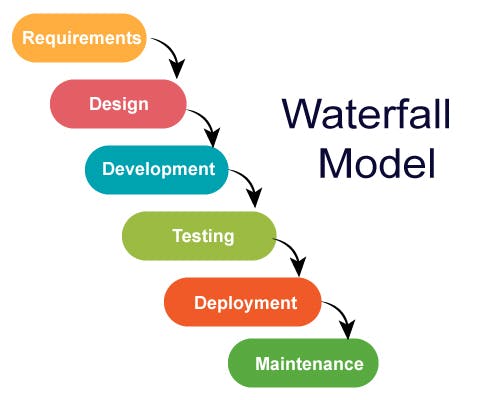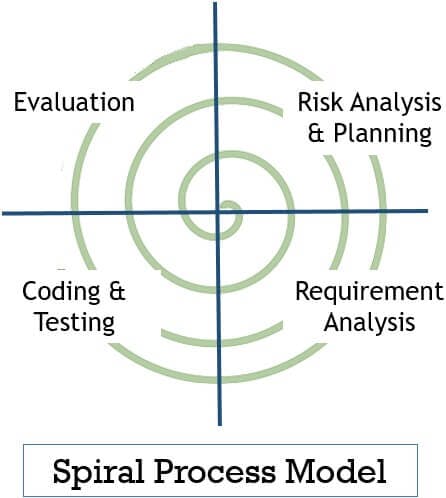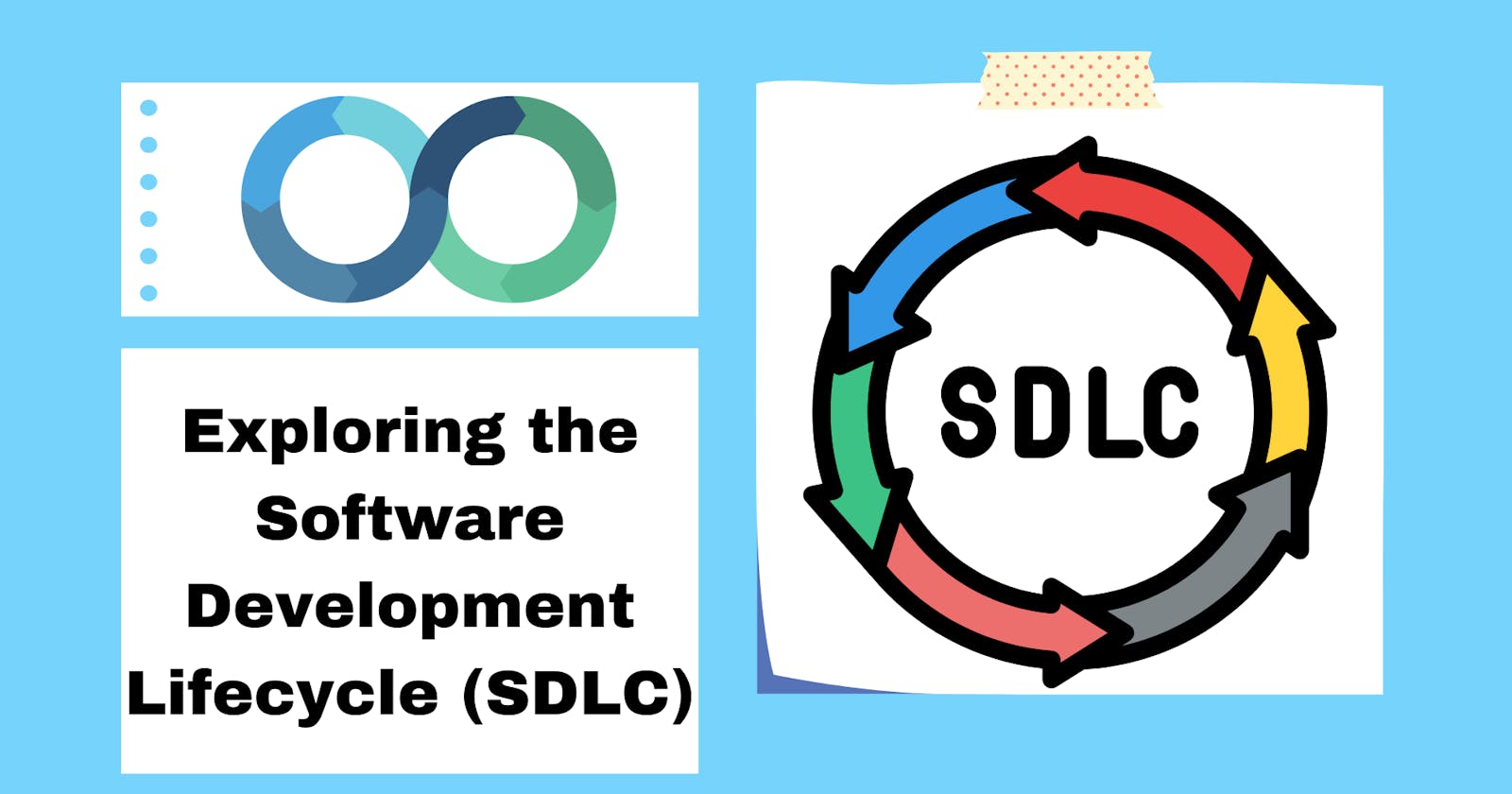Exploring the Software Development Lifecycle (SDLC)
Understanding the stages and importance of SDLC in software development
Table of contents
Welcome to the next part of our DevOps series. In this installment, we will be taking a closer look at different software development models and how they have evolved to meet the changing needs of the industry. So, whether you are a seasoned developer or just starting, let's explore the exciting world of software development together and I will also provide an example to make it easier to understand.🚀
What is SDLC?
The software development lifecycle (SDLC) is the cost-effective and time-efficient process that development teams use to design and build high-quality software. SDLC is a process that defines the various stages involved in the development of software for delivering a high-quality product. SDLC stages cover the complete life cycle of software i.e. from inception to retirement of the product.
Adhering to the SDLC process leads to the development of the software in a systematic and disciplined manner.
Why SDLC?
The main purpose of SDLC is to deliver a high-quality product that is as per the customer’s requirement.
SDLC has defined its phases as, Requirement gathering, Designing, Coding, Testing, and Maintenance. It is important to adhere to the phases to provide the Product systematically.
The software development lifecycle (SDLC) methodology provides a systematic management framework with specific deliverables at every stage of the software development process. As a result, all stakeholders agree on software development goals and requirements upfront and also have the plan to achieve those goals.
Let's understand the need for SDLC with a simple Example :
Let's say you want to build a house. You wouldn't just start building without a plan, would you? You would first need to design the blueprint, gather materials, and ensure that you have the necessary permits and approvals.
Similarly, in software development, SDLC serves as a blueprint for the entire development process. It provides a framework for developers to follow and ensures that the end product meets the client's needs and requirements. Without a structured approach like SDLC, the development process can become chaotic, resulting in missed deadlines, increased costs, and an unsatisfactory end product.
For Example, A software has to be developed and a team is divided to work on a feature of the product and is allowed to work as they want. One of the developers decides to design first whereas the other decides to code first and the other on the documentation part.
This will lead to project failure because of which it is necessary to have good knowledge and understanding among the team members to deliver an expected product.
Benefits of the SDLC model :
Certainly! Here are some of the key reasons why SDLC is important for developing a software system:
Provides a clear and structured approach to software development, ensuring that the project stays on track and meets its objectives.
Helps identify potential issues early in the development process, minimizing the risk of costly mistakes and rework later on.
Ensures that the end product meets the client's requirements and expectations, resulting in greater satisfaction and a better overall outcome.
Helps manage project timelines and budget by providing a framework for planning, estimation, and control.
Facilitates collaboration and communication between team members, stakeholders, and clients, improving overall efficiency and effectiveness.
Ensures that software development complies with industry standards and regulations, reducing the risk of legal or financial repercussions.
The main difference between SDLC and the waterfall model is that the waterfall model is sequential, while SDLC allows for iteration and feedback throughout the development process.
What are the different phases in SDLC?

The software development lifecycle is a process that is followed by software developers to create a new software application. It is a step-by-step process that helps ensure that the software is created efficiently, meets the user's needs, and is delivered on time. In this blog post, I will explain the software development lifecycle in beginner-friendly language and provide an example to make it easier to understand.
The entire SDLC process is divided into the following SDLC steps:
Planning Phase
Design Phase
Development Phase
Testing Phase
Deployment Phase
Maintenance Phase
Let's deep dive into all 6 steps one by one :
Planning Phase
The first phase of the software development lifecycle is the planning phase. In this phase, the software development team works with the stakeholders to determine the project requirements and develop a plan for how the software will be created. The team will create a project plan that outlines the scope, timeline, budget, and resources needed for the project.
Example: Let's say a company wants to develop a new mobile app. In the planning phase, the software development team will work with the stakeholders to determine what features the app should have, who the target audience is, and when the app should be released.
Design Phase
Once the project plan is in place, the software development team moves on to the design phase. In this phase, the team creates a detailed design document that outlines how the software will be developed. This includes how the software will be structured, what programming language will be used, and how the user interface will be designed.
Example: In the mobile app development example, the software development team would create a detailed design document that outlines how the app will be structured, what programming language will be used, and how the user interface will be designed.
Development Phase
The development phase is where the software is actually created. The software development team writes the code and tests the software to ensure it works as intended.
Example: In the mobile app development example, the software development team would write the code for the app and test it to ensure that it works as intended.
Testing Phase
Once the software is developed, it goes through the testing phase. The software development team tests the software to ensure that it is working as intended and is free of bugs.
Example: In the mobile app development example, the software development team would test the app to ensure that all the features work as intended, the app is user-friendly, and there are no bugs.
Deployment Phase
The deployment phase is where the software is released to the end users. This can involve installing the software on user devices, making the software available for download, or releasing it through a software distribution platform.
Example: In the mobile app development example, the software development team would release the app through a software distribution platform like the Apple App Store or Google Play Store.
Maintenance Phase
After the software is released, the software development team enters the maintenance phase. In this phase, they monitor the software to ensure that it continues to work as intended, fix any bugs that are found, and make any necessary updates.
Example: In the mobile app development example, the software development team would monitor the app to ensure that it continues to work as intended, fix any bugs that are found, and make any necessary updates to keep the app up-to-date.
What are SDLC models?
SDLC (Software Development Life Cycle) models are frameworks that guide the software development process from conception to deployment. They provide a structured approach for building software that meets user requirements, adheres to industry standards, and is delivered on time and within budget.
Some commonly used SDLC models include Waterfall, Agile, Iterative, Spiral, and V-model. Each model has its own unique set of phases, activities, and deliverables. We look at some popular SDLC models below.
1. Waterfall
The waterfall model arranges all the phases sequentially so that each new phase depends on the outcome of the previous phase. Conceptually, the design flows from one phase down to the next, like that of a waterfall.

An easy-to-understand example is building a house. Each phase of building a house, such as planning, designing, constructing, and finishing, is carried out sequentially, just like the Waterfall Model.
Pros and cons
The waterfall model provides the discipline to project management and gives a tangible output at the end of each phase. However, there is little room for change once a phase is considered complete, as changes can affect the software's delivery time, cost, and quality. Therefore, the model is most suitable for small software development projects, where tasks are easy to arrange and manage and requirements can be pre-defined accurately.
2. Iterative
The iterative process suggests that teams begin software development with a small subset of requirements. Then, they iteratively enhance versions over time until the complete software is ready for production. The team produces a new software version at the end of each iteration.

An easy-to-understand example of the iterative model is the process of designing a car. In the iterative model, the development process is divided into multiple iterations, with each iteration focusing on a specific aspect of the car's design.
Pros and cons
It’s easy to identify and manage risks, as requirements can change between iterations. However, repeated cycles could lead to scope change and underestimation of resources.
3. Spiral
The spiral model combines the iterative model's small repeated cycles with the waterfall model's linear sequential flow to prioritize risk analysis. You can use the spiral model to ensure the software's gradual release and improvement by building prototypes at each phase.

An easy-to-understand example is cooking a dish. You start with a recipe, plan the ingredients, start cooking, taste the dish, and make changes as needed. If it doesn't taste good, you can always make changes until you get the desired outcome.
Pros and cons
The spiral model is suitable for large and complex projects that require frequent changes. However, it can be expensive for smaller projects with a limited scope.
4. Agile
The agile model arranges the SDLC phases into several development cycles. The team iterates through the phases rapidly, delivering only small, incremental software changes in each cycle. They continuously evaluate requirements, plans, and results so that they can respond quickly to change. The agile model is both iterative and incremental, making it more efficient than other process models.

An easy-to-understand example is building a website. The website development team works in sprints, where they collaborate, plan, develop, test, and release the website in iterations.
Pros and cons
Rapid development cycles help teams identify and address issues in complex projects early on and before they become significant problems. They can also engage customers and stakeholders to obtain feedback throughout the project lifecycle. However, overreliance on customer feedback could lead to excessive scope changes or end the project midway.
In conclusion, the SDLC is a crucial framework for software development, enabling organizations to effectively plan, develop, test, and deploy software systems that meet the needs of their stakeholders while adhering to best practices and industry standards.
In this upcoming blog post, we will take a deep dive into the Waterfall model, examining its distinct characteristics, advantages and disadvantages in the software development process. Stay tuned!
If you found this blog informative, please show your support by dropping ❤️ and sharing it with your friends. 🙌🏼 I would also love to hear your feedback and suggestions for future topics, so feel free to drop a comment and let me know how I can improve. 🤗

